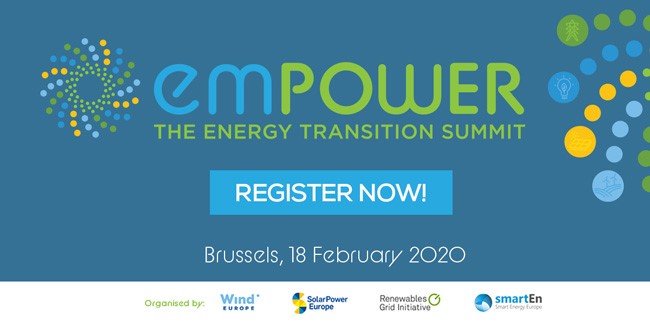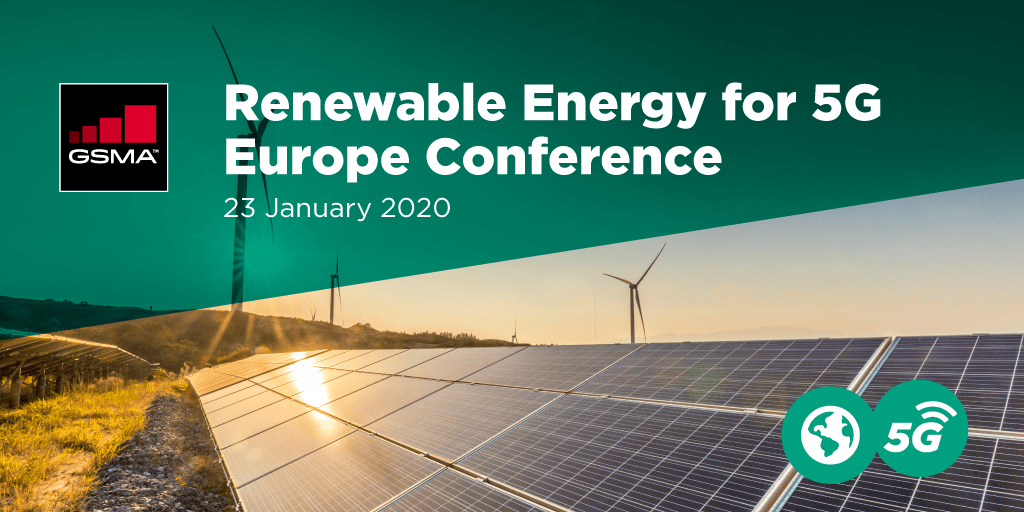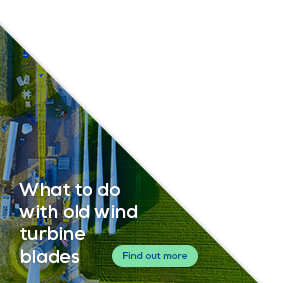WindEurope Bulletin
WindEurope Bulletin December 2019
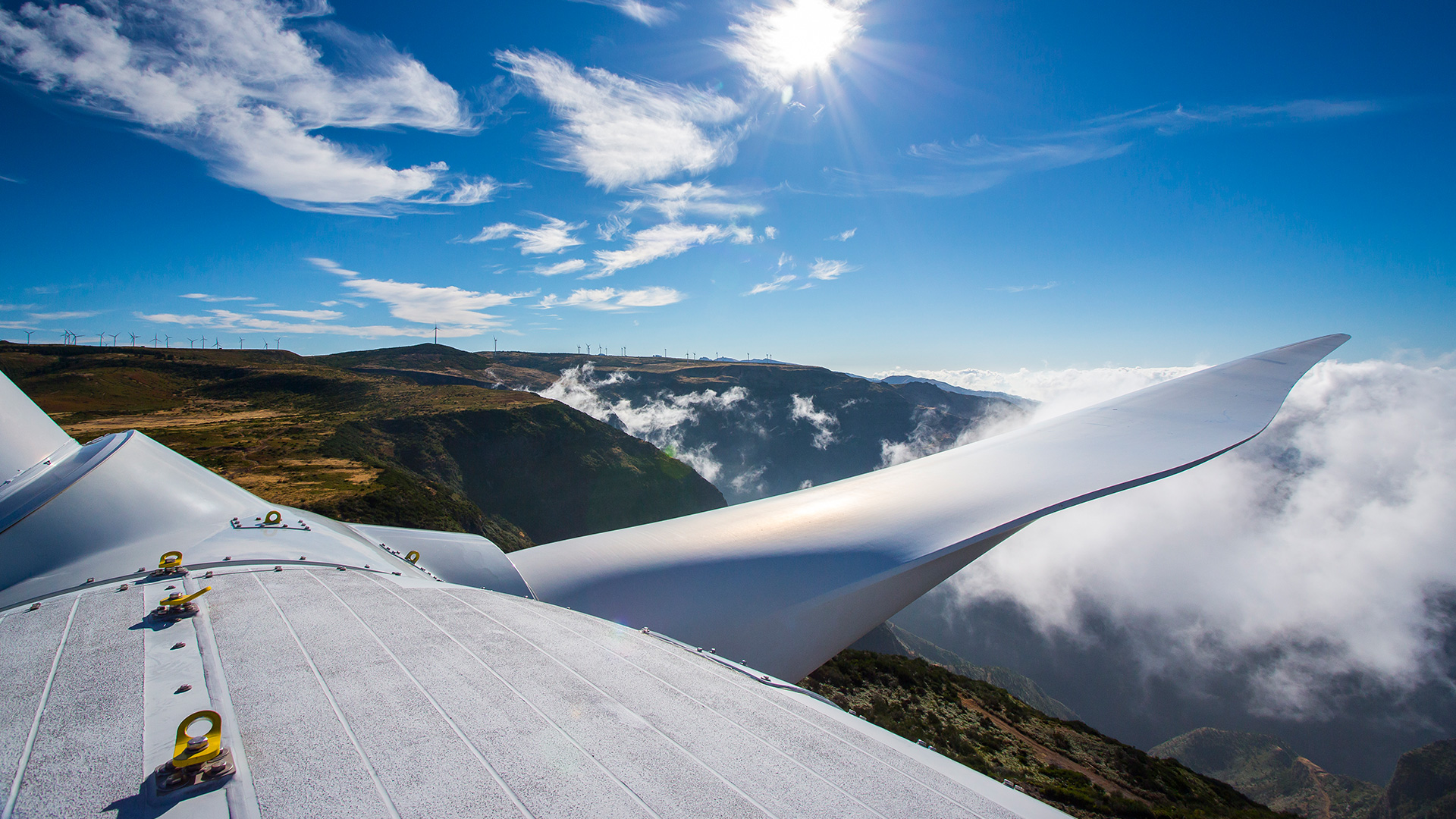
19 December 2019
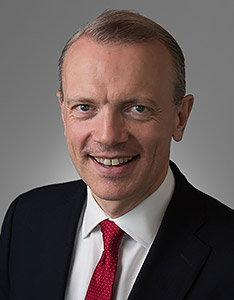 Giles Dickson
Giles DicksonCEO Foreword
Dear WindEurope Member,
This is the final WindEurope Bulletin of the decade. The 2020s promise to be both challenging and game-changing for wind energy.
We will begin the new decade with 27 new National Energy and Climate Plans – which EU Governments need to submit to Brussels by the end of this month. These Plans will define the shape and size of the wind markets you operate in for the next 10 years and will act as investment brochures mapping out how good each country is likely to be for us.
And now we start the decade with the EU’s new Green Deal, launched last week. This is a significant step in the right direction, for Europe and for wind energy. Let’s break down what’s in the Green Deal, and what it means for us.
First, the Green Deal is very good news for our industry and its ambitions. Central to it is a proposed European Climate Law: a legal enshrinement of Europe’s commitment to be carbon-neutral by 2050. This would be the first of its kind, anywhere. The proposal for the Law will come out in March 2020. We will keep you posted on this.
By the summer, the Commission will put forth proposals on how to boost Europe’s greenhouse gas emissions reduction target for 2030 from 40% today to between 50-55%. Again, this is good news for our industry.
Significantly, the Green Deal singles out offshore wind for its “enormous potential.” You will have seen the report we launched last month in Copenhagen on how Europe can reach 450 GW of offshore wind by 2050. The Green Deal reflects this level of ambition, and the European Commission plans to work out a full EU offshore strategy in 2020.
But the fact remains that onshore wind is going to be the dominant form of wind energy in the short term, and it needs policy support if it is going to play a leading role in the energy transition. Industry competitiveness will be a make-or-break issue for wind energy. So we welcome the news that, alongside the Green Deal the EU will adopt by March 2020 an industrial strategy on how to keep Europe’s industrial and technological leadership in the face of international competition. The strategy will give special attention to energy-intensive industries like steel and cement that serve as suppliers to sectors such as wind energy. The Commission will put forth a proposal to support zero-carbon steel-making processes in 2020. So climate-neutral wind towers are on the way.
The Commission will also be launching a strategy for smart sector integration: this will coordinate the energy sources to be used in decarbonising not just the power sector but vast swathes of the economy (e.g. in steel, buildings, transport, etc.) Decarbonisation of the economy is going to take a lot of energy – and it is unclear which energy sources are going to do it. Will it be done via electricity from renewables or gas? Or hydrogen? How much of each and under what circumstances? We will be monitoring this closely, and pushing for as much wind power as possible and, where most effective, renewables-based hydrogen.
We also welcome the Green Deal’s Sustainable Europe Investment Plan, 30% of which will be directed towards actions fighting climate change. As we have said many times, the energy transition cannot happen if it isn’t just, so it is good to see that the Investment Plan will include a new Just Transition Fund to help fossil-fuel intensive regions transition from coal to sustainable technologies. This is the best way to ensure a transition that is jobs-rich, publicly-supported, and fair for all Europeans.
Finally, let me wish you a very Merry Christmas on behalf of the entire WindEurope team. We are ready for a new decade of wind energy, and look forward to working with you in 2020.

Giles Dickson
Market Intelligence Spotlight
The EU’s big goals for offshore wind are achievable – with the right grid investments and spatial planning

The EU Commission’s big goals for offshore wind – between 230 and 450 GW by 2050 – are achievable provided the right investments in electricity grids and Governments take the right approach to maritime spatial planning.
That’s the conclusion of our report ‘Our energy, our future’ released last month at Offshore 2019 in Copenhagen. The report is a remit from the Energy Ministers of the 10 ‘North Seas’ countries who coordinate their work on offshore wind with each other and the Commission.
The report examines where 450 GW of offshore wind could be deployed most cost-effectively around Europe, bearing in mind there is only 20 GW today. 450 GW of offshore wind is part of a European Commission scenario to deliver climate neutrality by 2050.
The report concludes that 212 GW should be deployed in the North Sea, 85 GW in the Atlantic (including the Irish Sea), 83 GW in the Baltic, and 70 GW in the Mediterranean and other Southern European waters. This reflects the relative wind resources, proximity to energy demand and the location of the supply chain. The report also breaks down how would each country would deploy in an optimal scenario. The 380 GW that would deployed in Northern European waters would require less than 3% of the total space there.
The report considers how much it would cost to build these large volumes of offshore wind. It shows how maritime spatial planning is key to minimise costs. In at least 60% of the North Seas it is not possible to build offshore wind farms today. These “exclusion zones” exist either for environmental reasons or because space is set aside for fishing, shipping and military activity. They mean we can only build less than a quarter of the required volumes at very low cost – below €50/MWh.
But with a different approach to maritime spatial planning, one that has climate change at its heart, we could build much more at these prices – and benefit fully from the spectacular cost reductions achieved in recent years. Multiple use, e.g. allowing certain types of fishing in offshore wind farms, would really help.
Building 450 GW offshore wind by 2050 requires Europe to install over 20 GW a year by 2030 compared to 3 GW today. The industry is gearing up for this, but it’s crucial that Governments provide visibility on volumes and revenue schemes to give long-term confidence for the necessary investments. Governments should also anticipate this significant growth in offshore wind in their planning for both offshore and onshore grid connections. Not least since there is a 10-year lead time on planning and building the grids needed for offshore wind. Offshore grid investments will need to rise from less than €2bn in 2020 to up €8bn a year by 2030.
Europe also needs to provide a regulatory framework for offshore wind farms that have grid connections to more than one country. These “hybrid” projects will enable us to pool assets and infrastructure and reduce costs. Capital expenditure on offshore wind including grids will need to rise from around €6bn a year in 2020 to €23bn by 2030 and thereafter up to €45bn.
WindEurope CEO Giles Dickson said: “The EU says Europe needs at least 10 times as much offshore wind as we have today to meet the 2050 goal of decarbonising energy. The International Energy Agency believes offshore wind could become the no. 1 source of power generation in Europe in the early 2040s. The report shows that it is do-able and affordable. But three things need to happen: (1) the offshore wind supply chain keeps growing; (2) we build the grid connections; and (3) we get the maritime spatial planning right.”
Policy News
How to exploit offshore wind potential in Baltic Sea
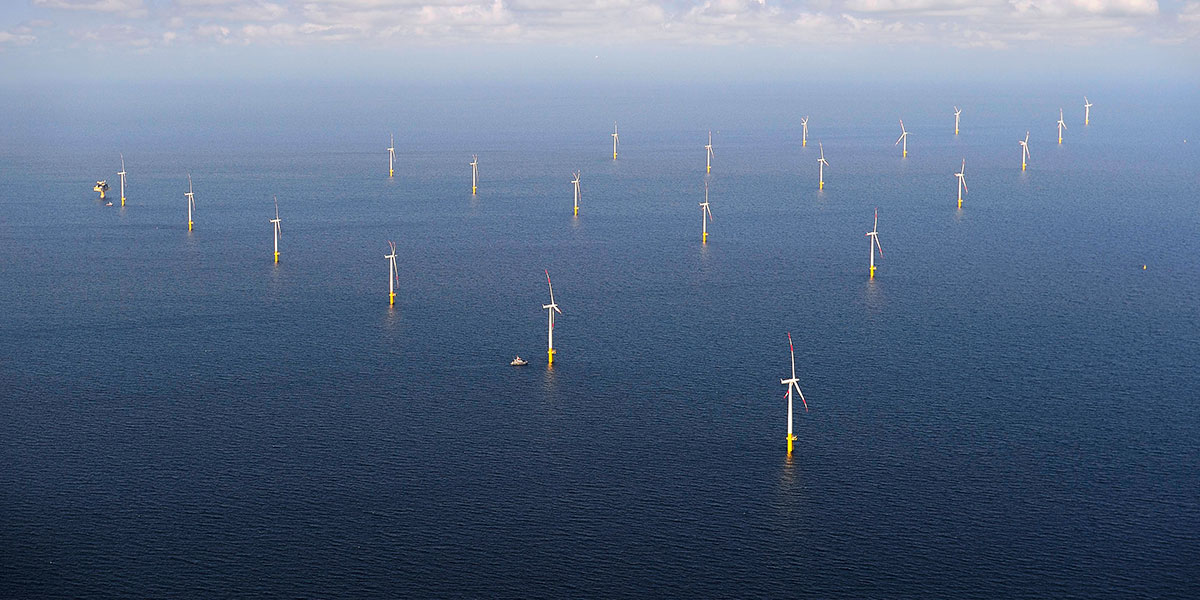
WindEurope’s Baltic Taskforce has released a new report, ‘Boosting offshore wind energy in the Baltic Sea’, which sets out the steps required to exploit the potential of offshore wind in the Baltic Sea.
Cross-border cooperation is vital in the Baltic Sea, where an interconnected market would help to overcome the issue of different power pricing zones with different patterns and technical standards. Grid development should also anticipate major growth in both offshore and onshore wind energy.
And there are numerous benefits that offshore wind would bring: offshore wind enhances energy independence and security as it prevents exposure to the volatility of oil, gas and coal prices. It is also key in the de-synchronisation of Baltic countries from the Russian power grid. Finally, offshore wind offers significant job creation potential in the region, especially in rural areas.
Recently there have been significant developments toward the establishment of a strong offshore wind base in the Baltic. In January 2019, PGE Baltic was established as the company responsible for the implementation of Poland’s Offshore Programme, with plans to build up to 2.5 GW of offshore wind by 2030. Also working to secure a healthy offshore hub in the Baltic is WindEurope’s Baltic Taskforce, a network of Industry representatives and National Associations promoting offshore wind energy in the Baltic States. The Taskforce regularly engages with governmental institutions – at both national and international level – and organises targeted workshops in the Baltic countries.
Upon the launch of the Baltic Taskforce’s latest report, Colin Brown (WindEurope’s Baltic Task Force Chair and Senior Business Development Manager at Vattenfall) said: “The countries around the North Sea have benefited heavily from the inclusion of offshore wind within their energy mix and offshore wind presents a huge opportunity for Baltic Sea-bordering countries. The Baltic Sea will be a key region to support Europe meeting its net zero carbon target by 2050 and now is the time to stimulate plans for long term sustainable growth. We look forward to working with political leaders and industry to maximise the deployment potential of the Baltic region.”
Boosting R&D for wind energy is key to Europe’s Green Deal

Targeted Research & Innovation is needed to accelerate the large-scale deployment of cost-competitive wind energy and support the existing European supply chains. This is according to a new report from the European Technology & Innovation Platform on Wind Energy (ETIPWind).
Europe needs a rapid scale up of wind energy to help keep global warming well below 2 degrees Celsius and deliver on its Paris Climate Agreement commitments. According to the European Commission’s Long Term Decarbonisation Strategy, Europe will need between 700 and 1,200 GW of wind capacity up from today’s 190 GW.
To deliver on its Climate and Energy objectives, Europe needs strong industrial policies and research programmes to further improve wind energy technology and continue to drive down costs. Targeted support in Research & Innovation will also strengthen supply chains, create local jobs and boost the global leadership of the European wind industry. By 2050, wind could supply 50% of Europe’s electricity and be the engine of the incoming European Commission’s Green Deal.
The ETIPWind Roadmap report provides technology solutions and research priorities that will drive the development of wind energy and help reduce costs across the supply chain. These include:
- Technologies to facilitate system integration (e.g. power electronics) and optimise operations and maintenance;
- The development of better and more sustainable materials and;
- New solutions to manufacture, transport and install the next generation of wind turbines.
Members’ interview
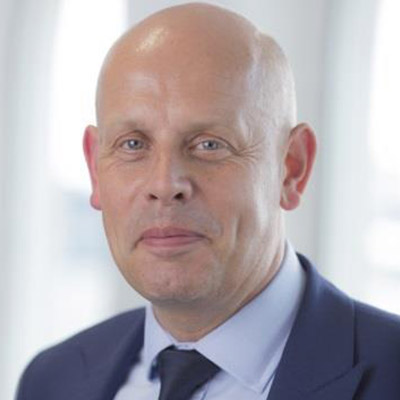
We sat down with National Grid Ventures CEO Jon Butterworth to talk everything from Brexit to how we can make the North Sea a powerhouse of offshore wind energy, and the prospects of building the world’s first HVDC multi-propose interconnector.
Members’ Successes
National Grid Electricity Transmission signs strategic deal with Smart Wires for power flow control technology to enable greater volumes of renewable power
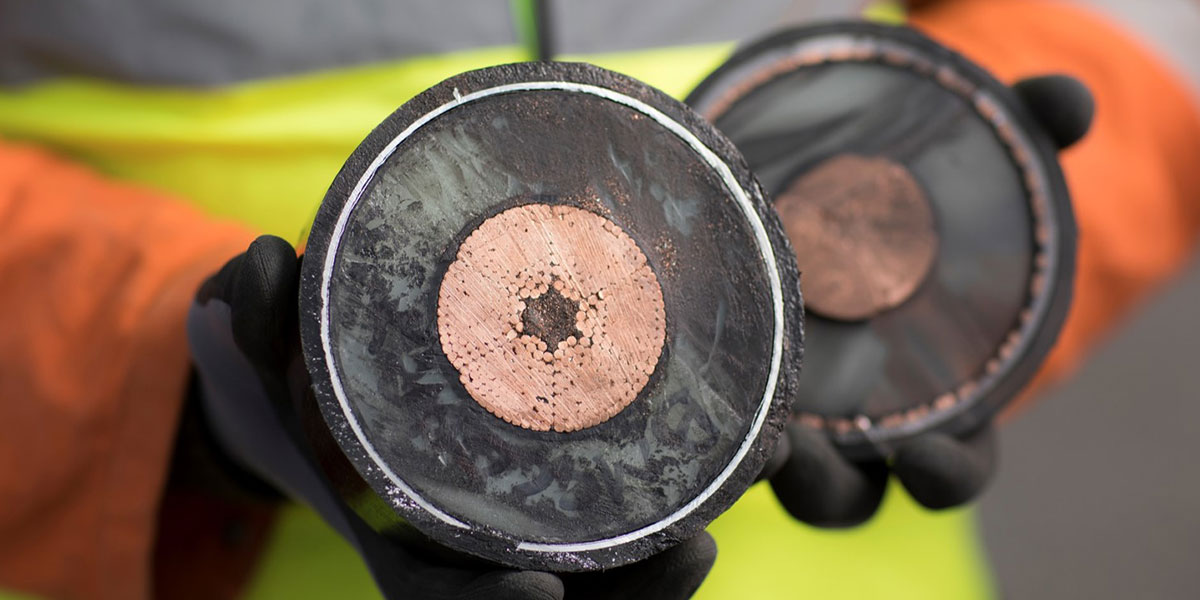
National Grid Electricity Transmission (NGET) has awarded a five-year framework agreement to power flow control technology company, Smart Wires. This will help decarbonise the UK electricity grid by enabling greater volumes of renewable power to be efficiently transferred to customers.
NGET will use modular power flow control technology to increase power transfer capability by making better use of its existing network. As the generation and demand connected to the network changes, network power flows change and circuits can become unequally loaded. Some circuits reach their maximum capacity while others are well below their limits. Installing power flow controllers allows NGET to provide the Electricity System Operator with the tools to quickly reduce the congestion that limits renewable generation, with minimal impact on communities and the environment.
NGET will proceed with five installations in 2020. These projects are anticipated to increase boundary capabilities by 1.5 GW in total across three boundaries.
Smart Wires power flow control devices allow utilities to increase the efficiency and resilience of today’s infrastructure. The technology’s modular nature means it’s quick to install and easy to move, thereby providing valuable flexibility. NGET can adjust the roll-out of the technology in response to network needs as they develop.
On visiting Smart Wires Global Research and Development Center in Silicon Valley, California, David Wright, Director of Electricity Transmission and Chief Electricity Engineer at National Grid, said, “NGET is pleased to sign this agreement with Smart Wires. This is an example of our commitment to deliver clean and affordable energy for our customers.
We have already completed several innovation projects with Smart Wires and have been impressed with their technology and professionalism.
I can see a world very soon where power grids everywhere become more intelligent, digital and controllable. NGET will be a leader in this transition and it’s inevitable that technology like Smart Wires will be a big part of this future.”
In response, Gregg Rotenberg, CEO of Smart Wires said, “NGET is demonstrating true global leadership and a genuine commitment to fighting climate change.
By making full use of their existing infrastructure, NGET is embracing the transformational changes that are required to achieve wide-scale decarbonisation.”
WindEurope welcomes Ports of Normandy as a new member
With offshore wind taking a special place in the recently launched European Green Deal, ports will play an ever greater role in the wind industry.
Ports of Normandy, a public body created by the Normandy Region and other local bodies in France, has joined WindEurope as a member.
This organisation includes 3 ports: Caen-Ouistreham, Dieppe, Cherbourg, all located in North West of France. Ports of Normandy focuses on developing the marine renewable sector, with a growing market on the northern coasts of France, the United Kingdom, and Ireland.
The organisation has three major axes of development:
Industrial production: In Cherbourg, the LM Wind blade factory began production in 2019 with the longest (107m) blades in the world. This plant has received 3 mega orders for a total of 1,200 blades.
Logistics: EDF has chosen Cherbourg for the assembly and pre-assembly of the wind turbines for the Courseulles and Fécamp Offshore wind turbines.
Maintenance: The port of Caen-Ouistreham was chosen for the creation of the maintenance base for the Courseulles field and the port of Dieppe for the maintenance base for the Tréport field.
Events
Delivering on Europe’s Green Deal: join the leading players at emPOWER – the Energy Transition Summit
When: 18 February 2020, 13:30 – 18:15, followed by a cocktail reception
Where: Brussels
Registration is now open for the inaugural edition of emPOWER, the Energy Transition Summit.
emPOWER is a one-day event designed to showcase innovative solutions to help deliver the European Green Deal.
Organised by WindEurope, SolarPower Europe, Renewables Grid Initiative and SmartEn, emPOWER will gather leaders from the worlds of policy and industry to take stock of where Europe is – and where it needs to go next – in achieving the ambitions of the European Green Deal.
Topics covered will include:
- Expert talk: 2020: state of play in the energy transition
- Game-changers and innovative energy solutions
- Managing a 100% renewables-based energy system
- Planning the transition to a net zero-carbon economy
Attendance is essential for anyone with an interest in how we achieve the energy transition. Check out the complete programme here.
WindEurope’s tech workshops: call for abstracts closes 10 January
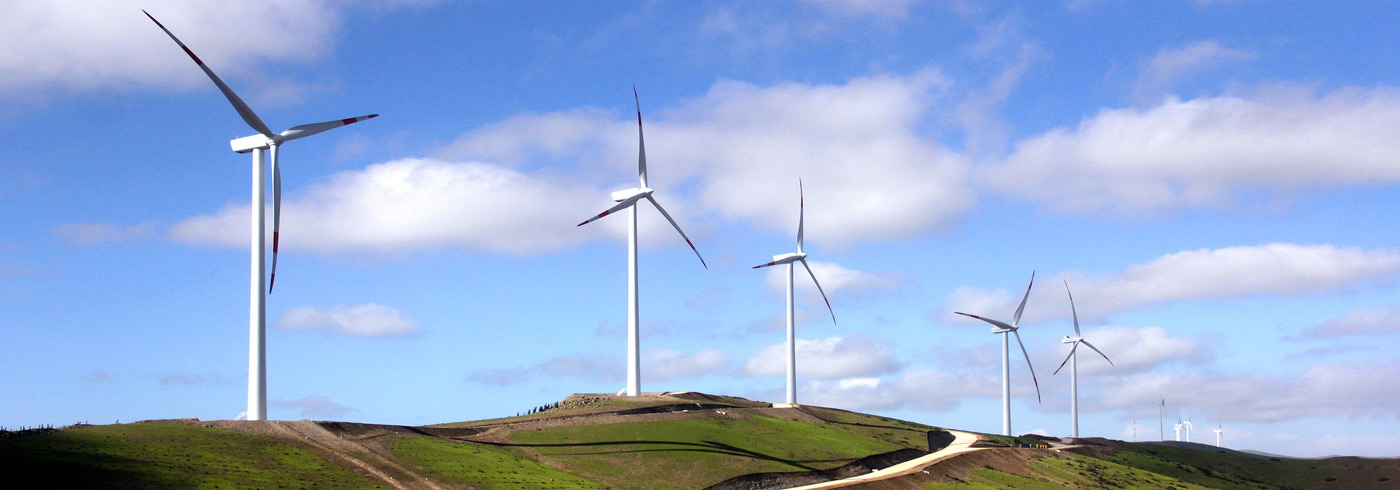
Are you an expert in the Analysis of Operating Wind Farms or Resource Assessment? Or do you have something to say about wind farm strategy, data and business model decisions?
In 2020 WindEurope will be hosting technical workshop on all these topics in the same venue, at the same time. We’ll be gathering on 23-24 April 2020 in Naples, Italy. This means less travel for you and more networking opportunities for all of us.
Would you like share your expertise? We’re accepting abstracts till 10 January 2020 on the following topics:
Resource Assessment
- Topic 1: Uncertainty in data analysis and processing
- Topic 2: Measurement including LiDARs
- Topic 3: Improving simulations and modelling with regards to levels of uncertainty
- Topic 4: Wakes & blockage
- Topic 5: Wind Atlas
- Topic 6: Climate Change
Analysis of Operating Wind Farms
- Topic 1: Power curves assessment
- Topic 2: Modelling
- Topic 3: Forecasting
- Topic 4: Turbine LiDARs
- Topic 5: Noise
General & Strategy
- Topic 1: All about Data
- Topic 2: Wind projects business model decisions (including permitting issues)
For more information on the topics, and on our submission guidelines, please visit our web page.
We look forward to hearing from you by 10 January – or you can submit your abstract already by clicking the button below.
Renewable Energy for 5G Europe conference
When: Brussels
Where: 23 January
Climate and digital policies are at the very top of the European agenda. The new Commission has set out highly ambitious targets, to become the first carbon-neutral continent by 2050 and to regain Europe’s digital sovereignty.
But without 5G mobile networks and drastic expansion of renewable energy, this transition will come to a grinding halt.
To learn more about the transformative power of 5G and its connection to the renewable energy sector, join us on 23 January at the RE for 5G Europe conference.
Not only will we discuss how mobile network operators themselves can switch entirely to renewable energy, but we will also zoom in on energy efficiency of 5G networks and their enabling potential for other industries. We have a wide range of speakers from Ericsson, Huawei, Telefónica, the European Commission, Bank of America and SmartEN, with many more to follow.


